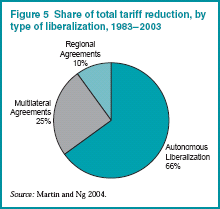Kragen Sitaker thinks out loud about dominant assurance contracts for funding public goods, especially free software. My first post on dominant assurance contracts is here. A few thoughts regarding Kragen’s analysis follow.
On public goods:
Generally public goods tend to be underprovided
Almost by definition, but my intuition is that there are important and almost universally unacknowledged exceptions where the good is nonrival, production generates large private benefits, consumption opportunities are limited, or perhaps some combination of these, e.g., recorded music. However, I have no rigorous backing for this intuition. Todo: read existing literature on socially optimal copyright.
[Richard Stallman] would be a happier man today had he spent those years [writing free software] not working with computers at all
I don’t know whether Stallman is happy, but this sounds suspect. He has gained tremendous personal benefits through his programming that he probably couldn’t have obtained otherwise (though perhaps this does not matter, as he shouldn’t have expected to become famous and leader of a very significant movement, unless he was a megalomaniac). It would be more interesting and clearer to make a case that the modal free software contributor acts selflessly, but that would be a long argument and beside the point, which I suppose is simply that unselfish action can produce some public goods.
On dominant assurance contracts:
I suspect that the analysis extends to a more general case, in which each contributor chooses the amount of their own contribution $S, the escrow agent performs the project if the total contributions are over some basic amount, and the extra refund is a specified percentage of the contribution rather than a specified dollar amount; but Tabarrok does not mention this in his paper.
Looks like a very useful extension.
However, copyright places the risk on the artist, while dominant assurance contracts place the risk on the artist’s fans.
I think here the risk is of a worse than expected work. It ought to be possible for an artist to assume more risk by making fulfillment of the contract (and thus not having to refund contributions plus a penalty) contingent on some agreed and hopefully minimally gameable quality measure.
[Update 20050605:On second thought I’m confusing (or extending) the dominant assurance contract idea, which only stipulates that a failure penalty be paid when not enough resources are raised, not when a successfully funded project is not successfully completed.]
Someone also asked whether it was possible to model a dominant assurance contract as a normal assurance contract with a separate prediction market, like the Iowa Electronic Markets, in which people traded idea futures on the likelihood of the completion of the funding. I don’t know how to model it in those terms, although it might be possible.
I don’t know how to model an assurance contract plus prediction market hedging either, but I suspect it may not work as well as a dominant assurance contract.
First, with a dominant assurance contract only contributors receive a payoff in the case of failure. If contribution and failure payoff are unbundled, how are incentives to contribute any different than a plain assurance contract? One can hedge against failure without contributing to sucess.
Second, risk and management of risk is transferred from the entrepreneur to the contributor. Managing risk by hedging securities is hard and costly. The entrepreneur offering the contract may be far more capable of managing risk than contributors.
Prediction market prices may prove helpful to entrepreneurs and potential contributors in deciding what contracts to offer and accept, but this is orthogonal to the structure of dominant assurance contracts, which attack contribution problems rather than revelation problems.
Finally, Tabarrok suggests that the market for escrow agents should be highly competitive because there are low barriers to entry — all you have to do is write a three-line contract and hold some money, assuming that the possible contributors first hold some kind of competition to select which escrow agent they want to use. I think that’s a big assumption, and that escrow agents are likely to wield substantial market power by virtue of network effects, and consequently extract substantial profits from this business.
A well-known escrow agent will be able to attract many more contributors, and so will be able to require much less money from each, which is likely to be a large incentive to use the well-known
agent.
Tabarrok does not mention escrow agents, who may well be involved, but I see no reason to assume the market for such services should be any less competitive than any other market for financial intermediaries. He says that he expects the market for contract providers to be competitive. Presumably these will be entrepreneurs with an expertise in producing a particular public good or aggregators. We have examples of these, from contractors to the United Way or eBay. How would dominant assurance contracts alter the competitive landscape, for better or worse?
[Update 20050605:The distinction I draw between escrow agents and contract providers may not be relevant. It appears that Fundable acts as an aggregator/marketplace and an escrow agent. Also, citing eBay may not inspire confidence. I’ve read, but cannot find a cite for, that it has 85% market share in the US person-to-person online auction market. Whether this is something to worry about will be in the eye of the beholder, e.g., what “market” is relevant — eBay faces indirect competition from garage sales, new goods at retail, and everything in between. Kragen will “just” have to work on zFundable.]
Kragen also has good thoughts on how dominant assurance contracts could prove useful in several fields, potential problems, and responses to several irrelevant objections. Read the whole thing and see Tabarrok’s paper and recent post without which none of the current discussants would be aware of the idea.
